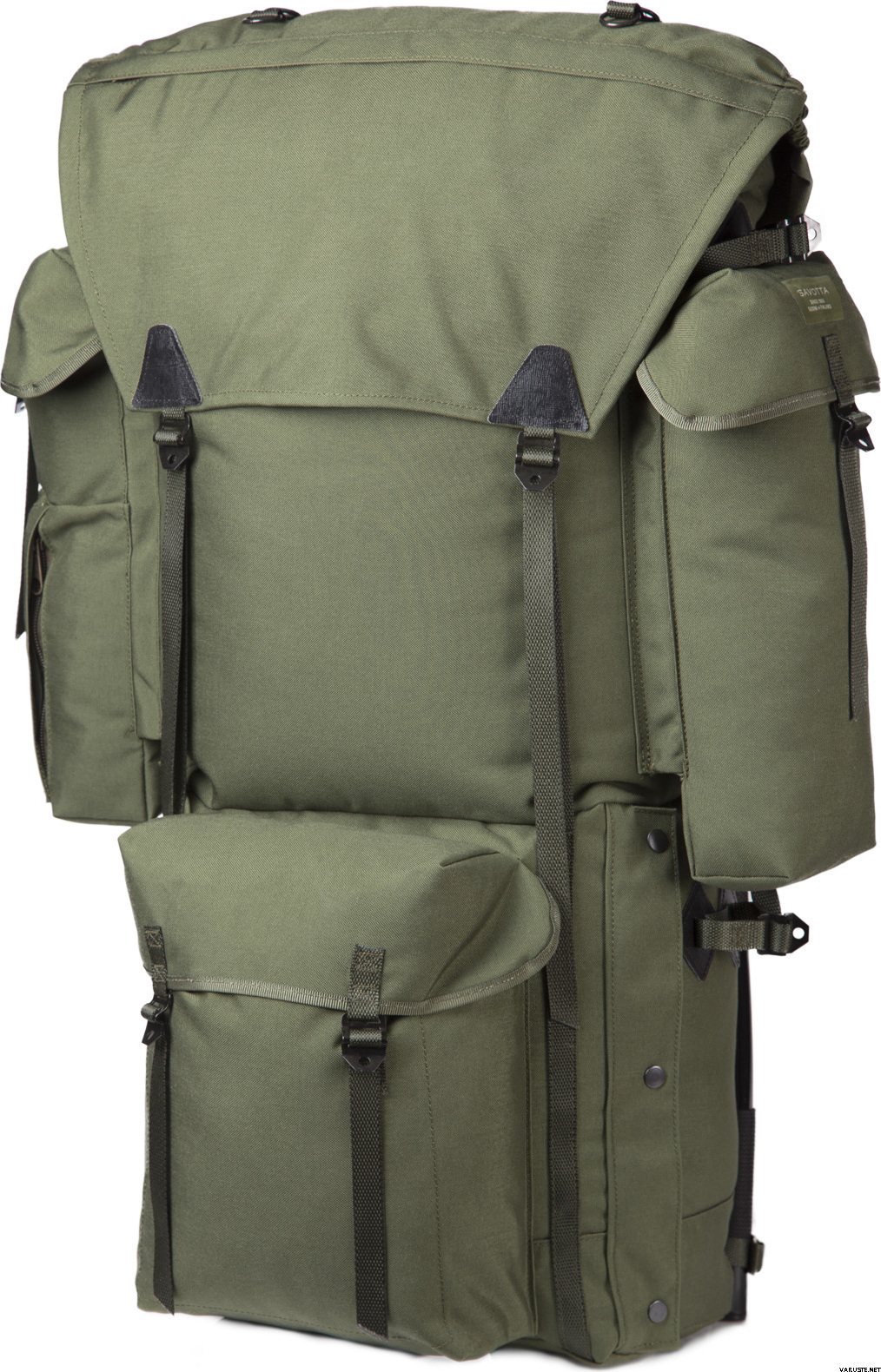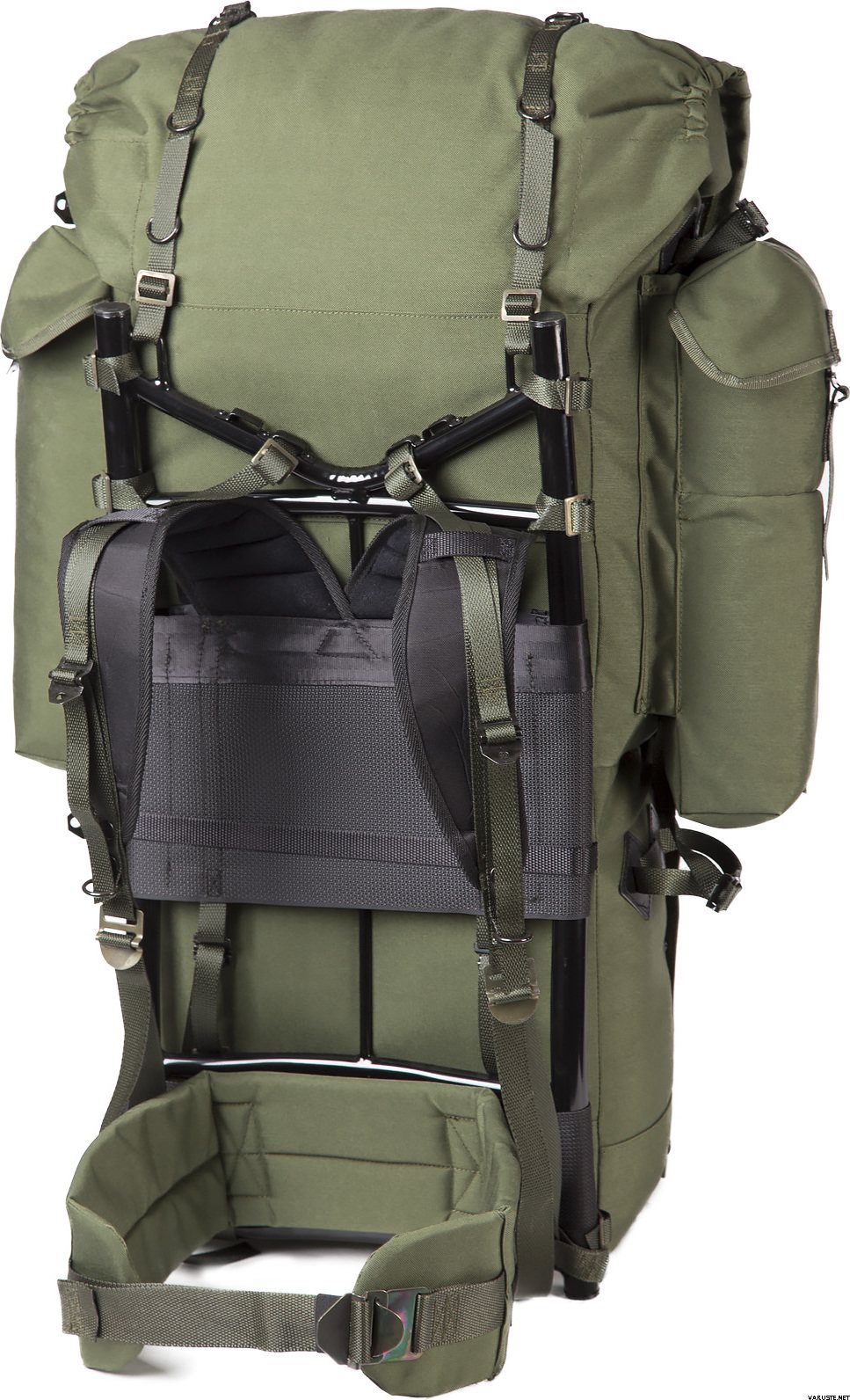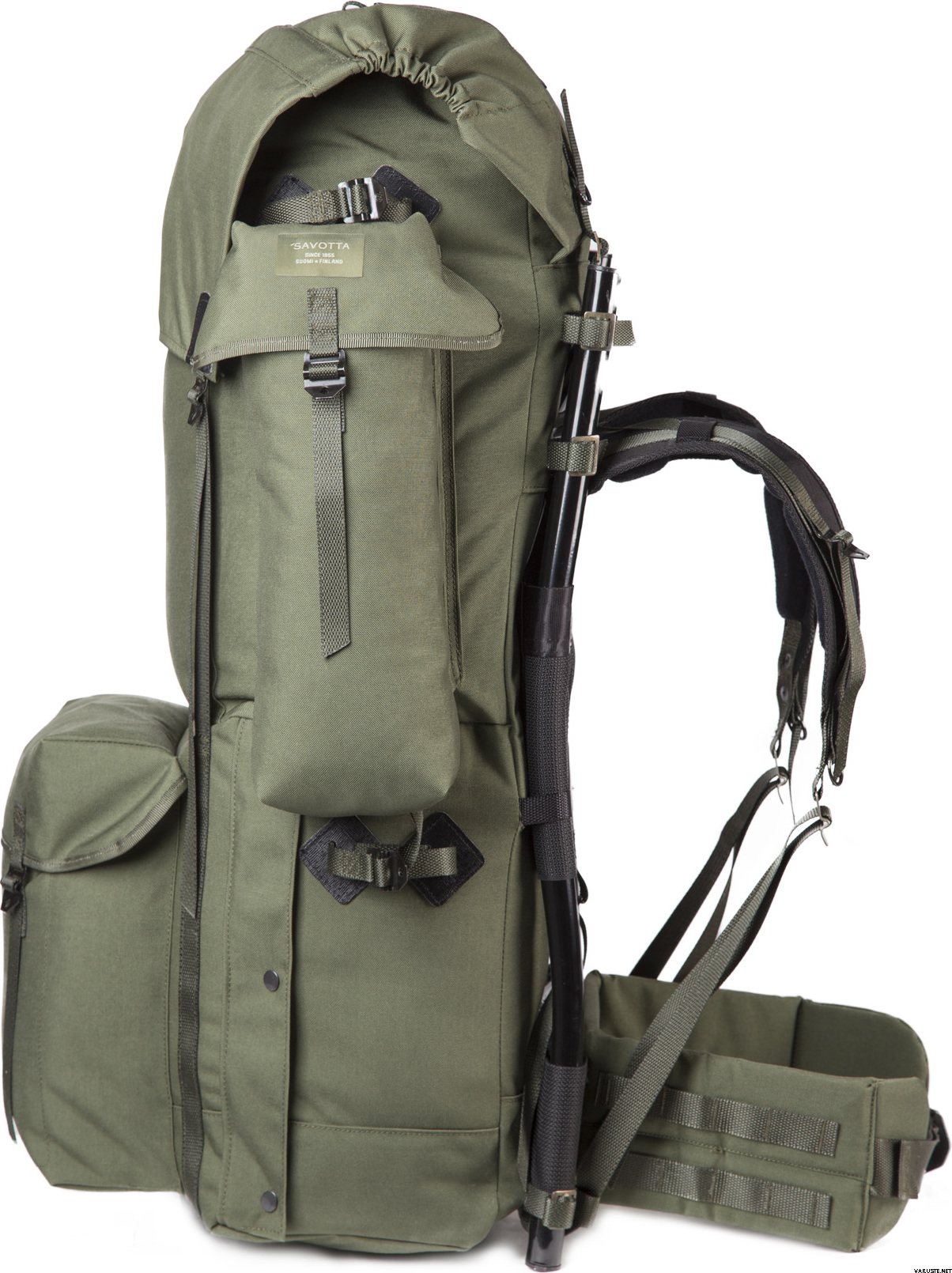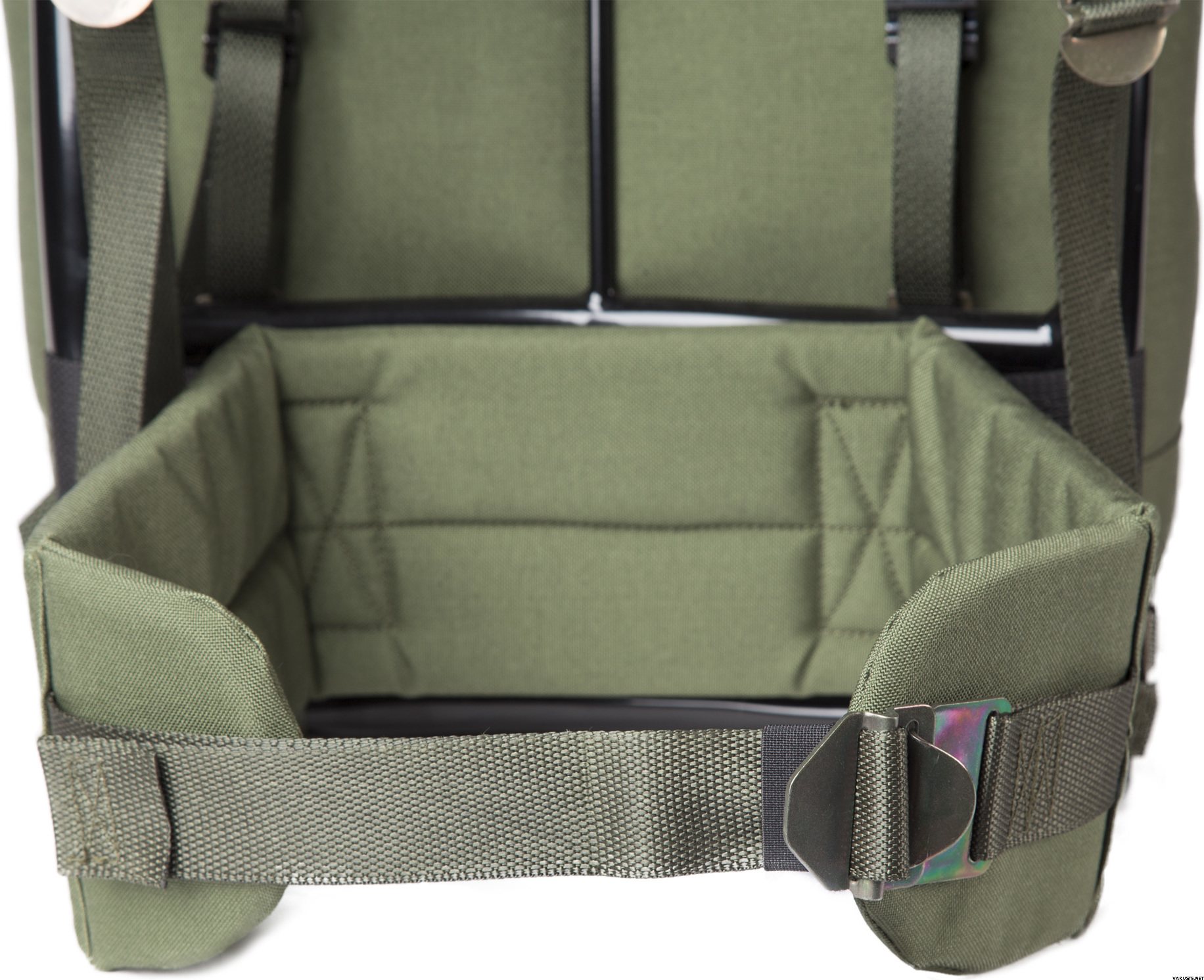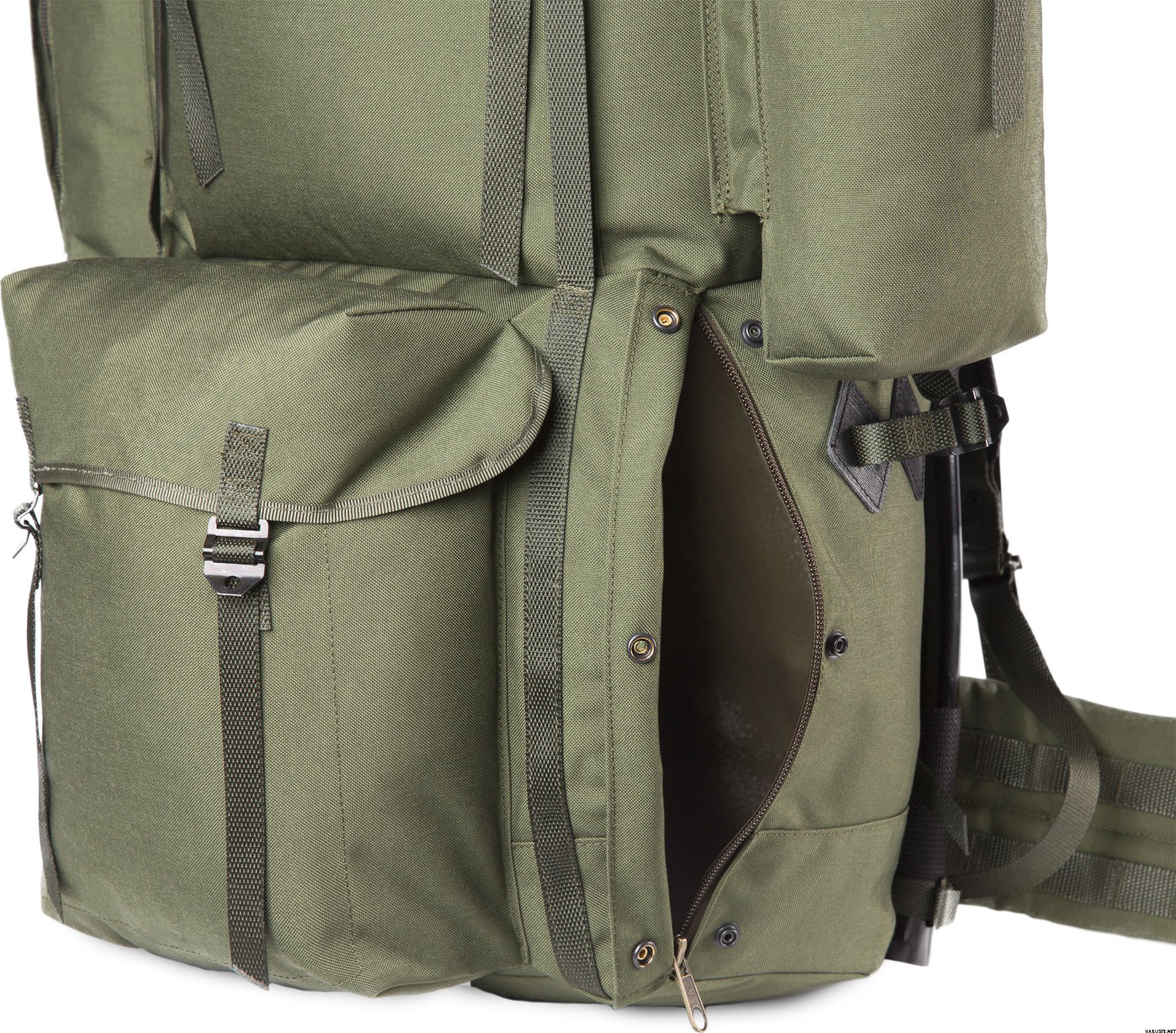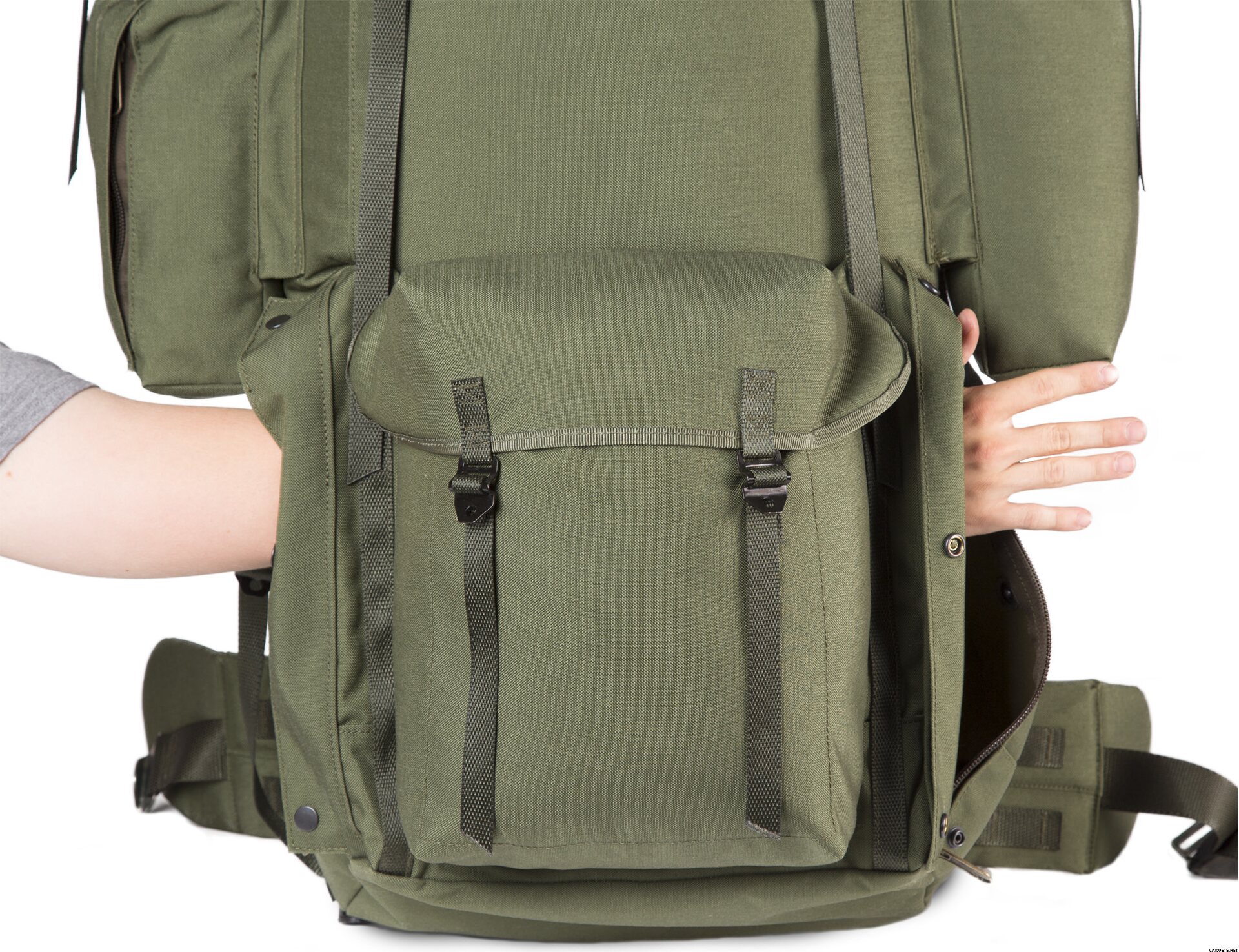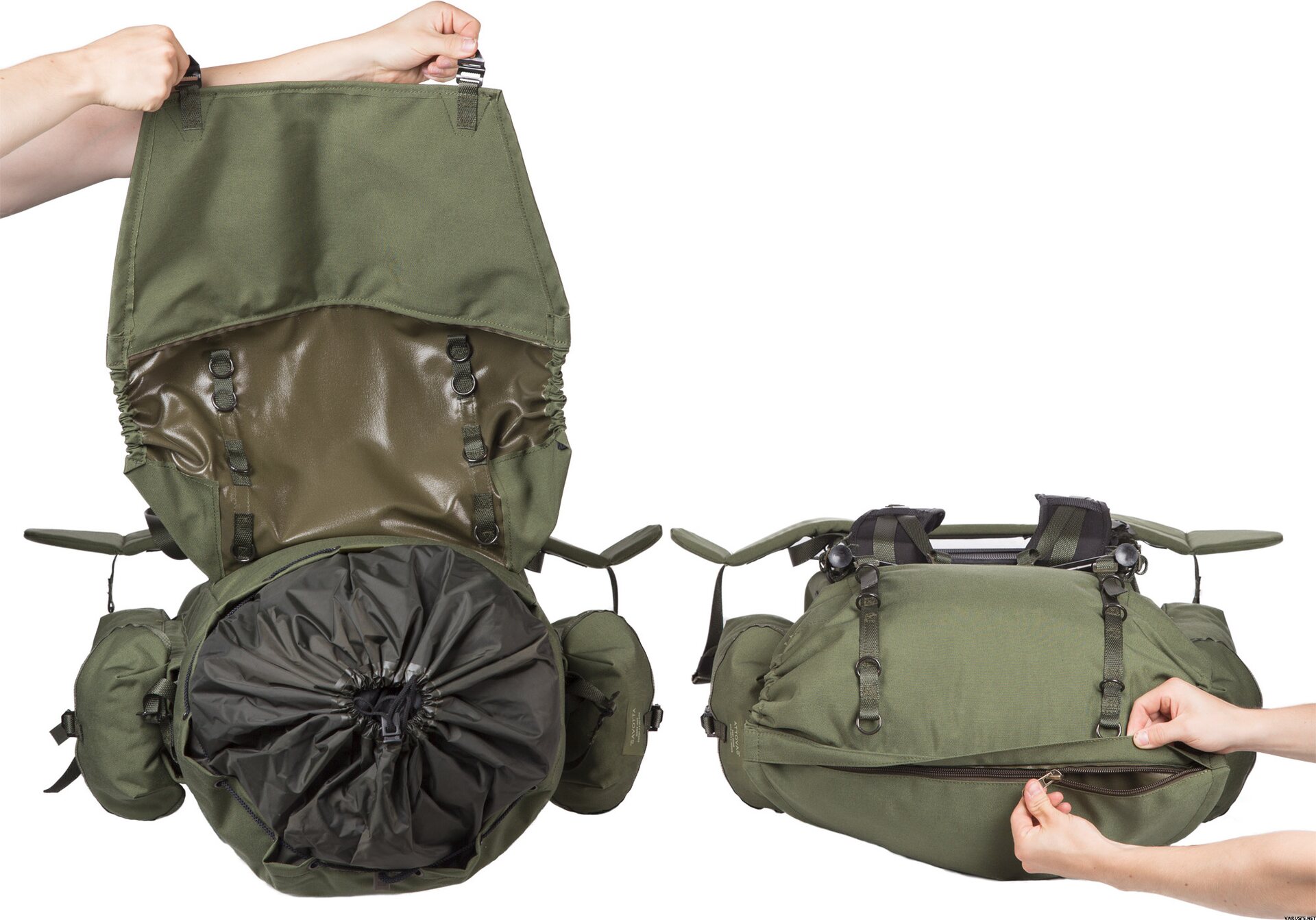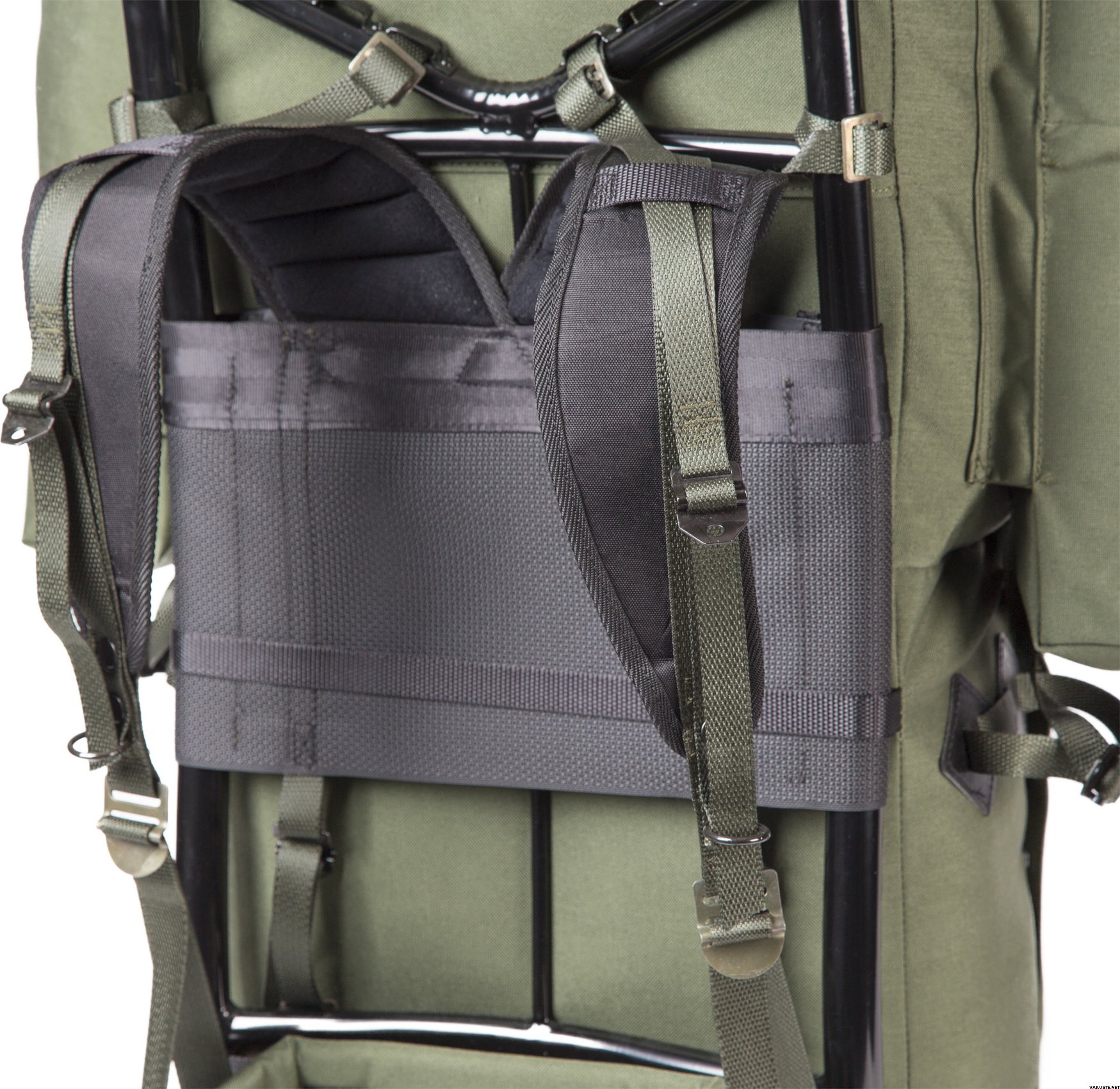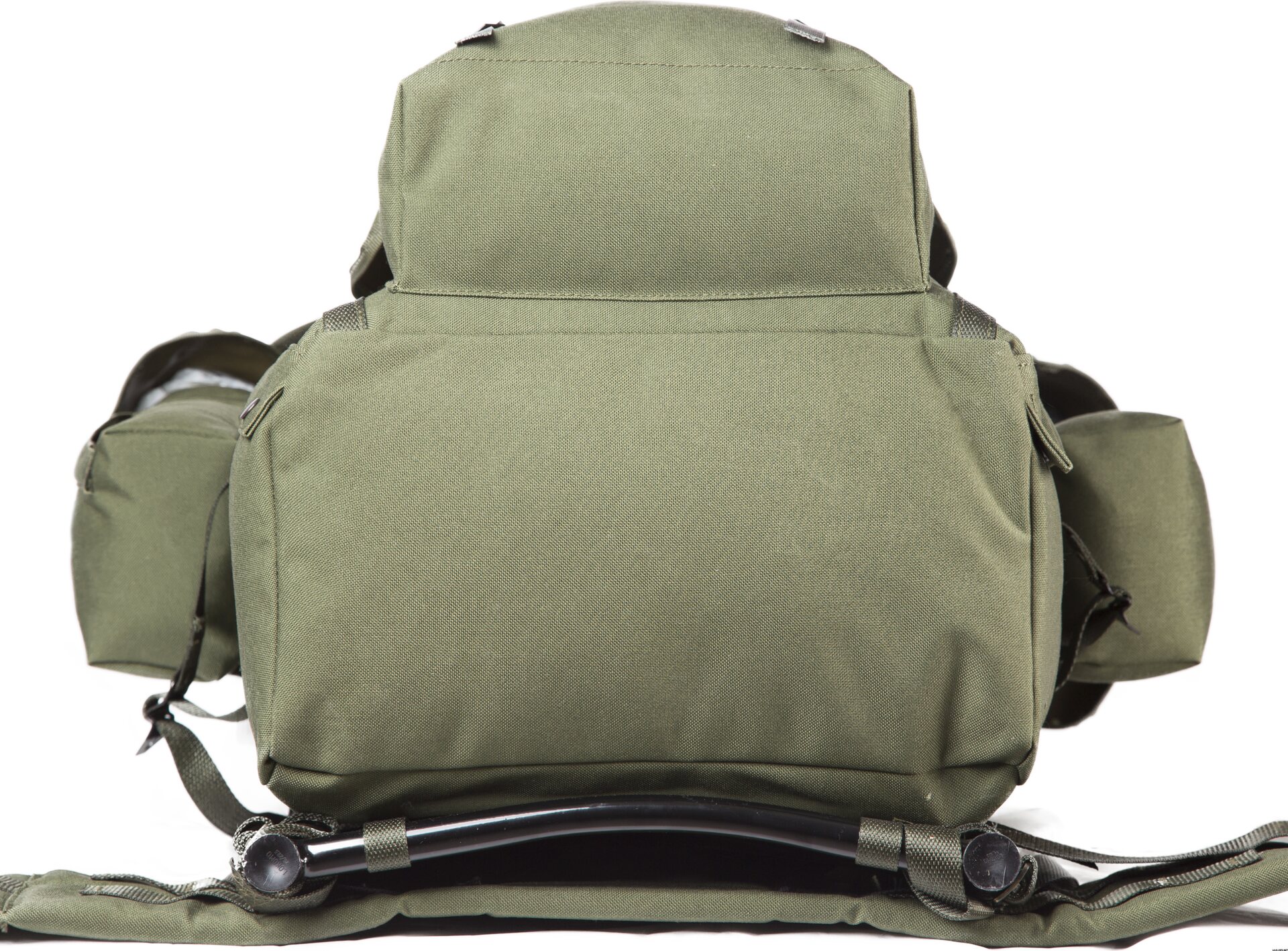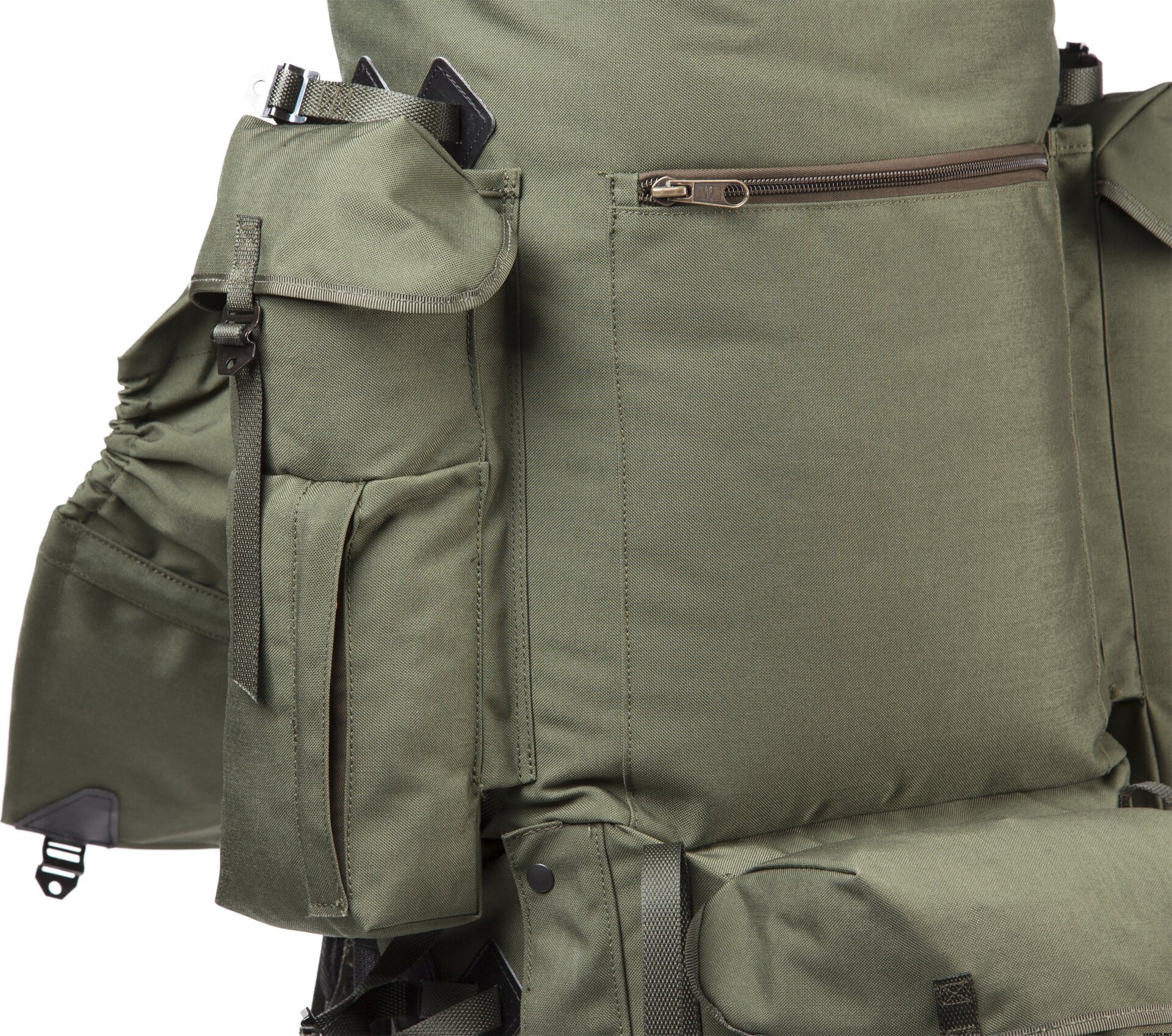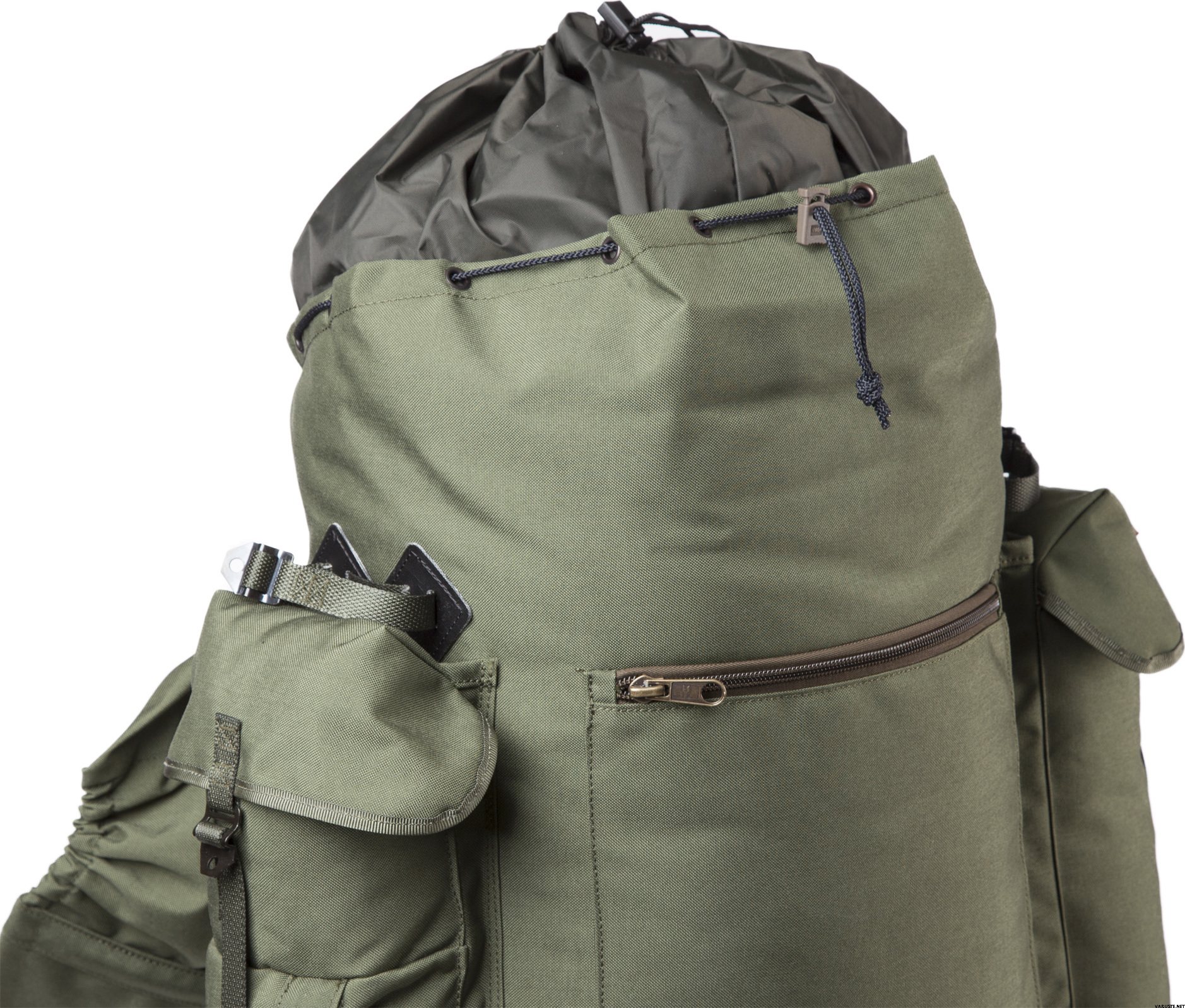
Savotta LJK
This product is not for sale at the moment.
Detailed availability
Reviews
| Overall rating | (4 reviews) |
Product description
The special rucksack designed for the paratroopers of the Finnish Defence Forces has also gained popularity among recreational hikers over the decades. This rucksack designed for heavy-duty military use resists, due to its materials and structures, tougher handling than most of its users, such as a free fall from an aircraft. In view of its properties, LJK also suits average users and it is an excellent choice for those seeking a lifelong partnership.
The LJK rucksack was launched in 1985. Originally designed for military use, the rucksack was also warmly received among civilian users. The special features of the model include a frame without the top curve, which makes moving easier since it does not get in the way of the head. There are no pockets on the sides of the rucksack in the bottom section, which makes cross-country skiing with the rucksack more comfortable. The LJK rucksack is still used in the Finnish Defence Forces today and it is equally popular among recreational users.
A traditional external frame rucksack is at its best with a heavy load but is equally suitable for lighter outings as well. The external pipe frame allows air circulation between the bag and the back of the user, reducing the heat load significantly. Although anatomical rucksacks have taken over some turf in the rucksack market, there are still situations where nothing beats an external frame rucksack.
The top compartment of the bag (dimensions approximately 45 x 40 x 20 cm) is closed by tightening the drawstring opening which is secured with a waterproof protective collar which enables overpacking as well. The opening is covered with a generously sized flap which is secured with straps. The straps are long enough for carrying, for example, a sleeping bag or mat under the flap. When necessary, the straps can be easily extended with the supplied detachable straps. The top and bottom compartments of the bag are separated by a built-in divider.
The flap of the top compartment has a flat pocket for small items (dimensions approximately 25 x 45 cm), which can also accommodate larger items that need to be easily reachable. The outside of the top compartment features a flat map pocket with a zip closure (dimensions approximately 30 x 30 cm).
The bag’s bottom compartment (dimensions approximately 35 x 35 x 20 cm) opens on both vertical sides with a zip. The zips are protected with a press stud flap. The flaps should always be fastened carefully because they take some of the weight and strain off the zips.
The side pockets (dimensions approximately 40 x 10 x 7 cm) are closed by tightening the waterproof protective collar which is covered with a flap that can be secured with straps. The left side pocket is divided into two compartments with a built-in divider. The lower compartment is accessed via the side zip.
There is a large outer pocket (dimensions approximately 32 x 25 x 10 cm) in the lower back, which is closed by tightening the protective collar. The pocket is covered with a flap secured with two straps. This pocket is ideal for packing items that need to be easily reachable during the hike, such as a camping stove and food.
There is a generous number of attachment loops on top of the flap and inside the main compartment. With these, it is possible to tie even large loads (such as the beloved Sissi tent) on top of or under the flap securely by using detachable straps. The loops on the inside of the flap are perfect for attaching a sleeping mat. Especially a military-style tent mattress can be very conveniently attached to these by its elastic bands.
Axes or other long, narrow supplies can be carried behind the tunnel-shaped side pockets. The attachment points with straps above the side pockets secure the attachment of the supplies.
The bottom corners of the shoulder straps have loops which act as attachment points for small items, such as water bottles.
The frame of the carrying system is the strong aluminium pipe frame of the LJK model. Contrary to civilian rucksacks, LJK does not have an upper curve because the curve gets easily in the way of the head when it is necessary to move in rough terrain. Furthermore, the frame of LJK has been reinforced with additional support blocks. The shoulder straps and hip belt are firmly padded and anatomically shaped. The buckle of the hip belt can be undone very quickly with one hand. It is a very valuable feature in a possible emergency situation. The buckled chest strap provides extra comfort and support for carrying.
The continuously adjustable (in length) supportive carrying system and hip belt of the rucksack can be adjusted to suit users of all different heights and sizes. It is possible to adjust the centre of gravity of the shoulder straps even while walking by tightening and loosening the straps attached to the top of the frame. The centre of gravity of the rucksack itself between the shoulders and the hips is adjusted by loosening and tightening the shoulder straps and hip belt.
External dimensions: height 85 cm, width 55 cm, depth 30 cm.
Capacity: 80 l.
Weight: 3.70 kg.
Materials: fabric 1000D Cordura, polyester straps, metal buckles and Kroko zips.
Frame: DUR aluminium.
Colour: olive green.
The product has a 10-year guarantee against material and manufacturing defects.
Monen mielestä paras rinkka kovaan ja pitkäikäiseen käyttöön. Korkealle hinnalle saa rutkasti vastinetta.
Gender
Men, women
Weight
3,7 kg
Warranty
120 month(s)
Country of origin
Comments
| Overall rating | ☆☆☆☆☆ |
 — Show original
— Show originalAt that price, the backpack should have a chest strap and a better hip belt. I myself put the Fjällräven chest strap and the Savotta 1200 back belt with a lot more padding in the backpack. Now the backpack is even better to carry. Even when you would like to sew PALS loops, this backpack would start to touch perfection, at least if you think about military use!On the border of North Karelia when I'm a guerrilla, I can say that the LJK backpack is definitely the best backpack ever. Even heavy loads go reasonably lightly forward, taking much less on the shoulders than the new Sacci backpacks now available and the rest of what we have had in the test. I recommend!Based on my experience, I would not spend such a sum of money on that backpack when I get two Deuter runners for the same price (there is no personal experience of Deuter). A service friend who enjoyed hiking said that yes, you can find a backpack with better carrying properties on the home side than the inti LJK (with an old cooler model). It may also be that the guy hasn't yet had to carry as heavy loads as LJK usually carries in India. To the 1/06 comment I would like to add that no backpack will keep anything dry unless the equipment is packed in a garbage bag (necessary). From the main pocket, everyone has to dig from above, which usually means spreading the equipment on the ground to get access to the changing clothes at the bottom. The side zippers on either side of the large lower pocket break. For example, Vekaranjärvi's equipment warehouse does not have to replace the backpack intact, because too many have broken the zipper. The lower pocket holds combat food, which sometimes needs to be packed for three days, when the zippers are hard (note! This is combat food with a lot of extra). The daypack that comes with the backpack is especially handy for small walking trips. A man can safely drag the ground long by pulling the loops of the backpack. The fabric lasts, but again the deceptive zippers (I broke the big pocket of the daypack in normal use). I can’t mention the carrying features terribly, because I haven’t made the effort to adjust the length of the back of the backpack to suit myself, leaving the hip belt at the wrong height as well. In some individuals, the shoulder blades tend to loosen and when the back is crouched, the middle tube in the body feels through the back directly against the spine. The backpack has good mooring opportunities outside. The arc saw and ax go with you effortlessly. You can even leave the daypack hanging on the frame and it does not interfere with hiking (snack and drink at your fingertips). Under the top flap fastening straps, there is room for a small amount of chopped firewood. A guerrilla tent or fireplace can be easily moved with a backpack as long as the durability is sufficient. Below you will find a pocket for the camping stove (in addition, 0.5l of alcohol and a raincoat can fit in the pocket). I don’t know that any other manufacturer’s backpack would have a similar opportunity to prepare food by sitting on top of the backpack throughout the delivery. A particularly nice feature, especially after a long transition: water and food within reach and at the same time can rest your feet.In fact, during the year, two pieces were broken due to overweight, but on the other hand, you do not need to carry the same weight as in a special situation. The attachment points of the backpack part failed both times. An excellent backpack can carry 20-30 kilos of black, but in serious cases it can withstand 50-60 kilos. Belt tensioners slip at times, with a small correction hold.Brand

